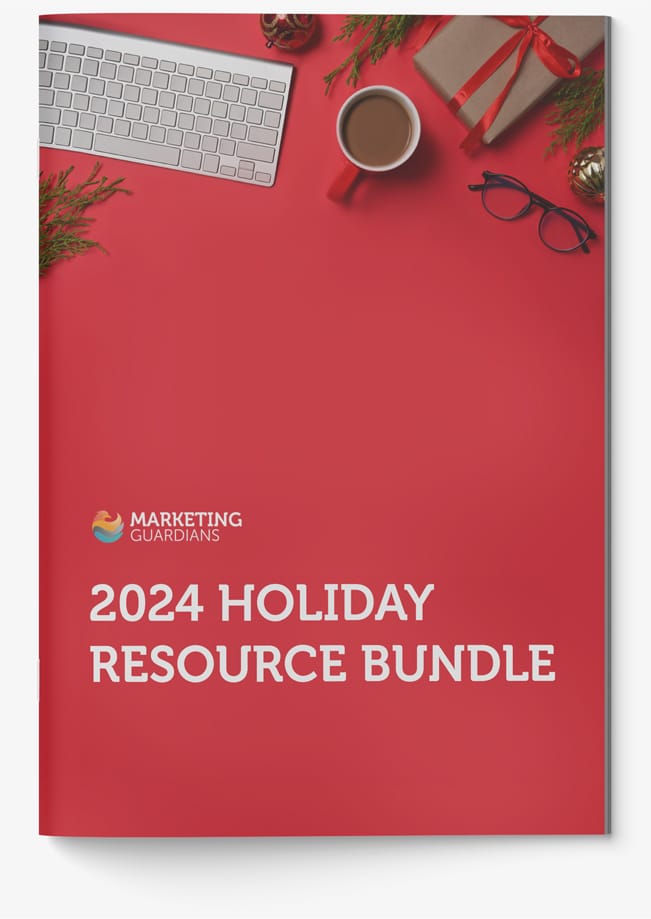Did you know that in 2023, brick-and-mortar and online channels raked in a staggering $964 billion in sales during the holiday season? That’s nearly $28 billion more than the previous year, an increase of 3.6%! Even more interesting, a significant portion of these sales started as early as October. It’s clear that early preparation is not just a smart move—it’s critical for maximizing holiday sales success.
But why is planning ahead so important? Let’s dive into eight essential reasons why your holiday marketing strategy should start today, with real-world examples to bring each one to life.
1. Properly Identify Target Markets & Tailor Strategies
Knowing who your audience is can make all the difference. Take Target, for example. In recent years, they analyzed their data and noticed an uptick in demand for same-day delivery and curbside pickup. By using this insight, they tailored their holiday messaging to emphasize convenience, catering to busy shoppers. The result? A 300% increase in same-day services during the holiday season!
By conducting market research, analyzing past data, and developing buyer personas, you can craft messaging that resonates and drives engagement. Planning ahead allows time for these insights to shape your strategy.
2. Build Trust & Transparency
Building trust with your audience is essential, and planning ahead lets you do it right. A great example is Zappos, the online shoe retailer known for its stellar customer service. They clearly communicate their shipping and return policies upfront and have built a loyal customer base because of it. In fact, Zappos’ “free returns” policy has led to a surge in customer satisfaction, particularly during the holiday season when shoppers want a hassle-free experience.
When you start early, you can ensure that your pricing, return policies, and customer service expectations are clearly communicated, helping you stand out in a crowded marketplace.
3. Be More Authentic
One company that excels at authenticity is Patagonia. Known for its environmental advocacy, Patagonia regularly shares stories about how they are making a positive impact on the planet. During the holidays, they run campaigns like “Don’t Buy This Jacket,” which encourages thoughtful consumption and reinforces their brand values. This authenticity has helped build deep connections with their customers.
By starting early, you can weave authentic storytelling into your campaigns, giving your audience more reasons to believe in your brand.
4. Stand Out Among the Competition
In the competitive holiday season, standing out is key. Think of Apple’s iconic holiday commercials, which often feature heartfelt stories that connect with their audience on an emotional level. One famous campaign, “Share Your Gifts,” encouraged people to unlock their creativity and share it with loved ones. The unique messaging made Apple stand out from other tech brands simply promoting product discounts.
Starting your campaign planning early gives you time to analyze your competitors and create standout campaigns that set you apart from the crowd.
5. Organize Timelines and Marketing Campaigns
Holiday chaos is real, but planning ahead lets you organize timelines effectively. Amazon, for instance, is a master at preparing early for the holidays. They roll out their marketing calendars well in advance to ensure that promotions, Prime Day lead-ins, and holiday-specific ads run like clockwork. This advanced planning helps them capture more sales earlier in the season and provide a seamless experience for customers.
Using tools like project management software, you can keep everything on track and ensure your holiday campaigns are executed flawlessly.
6. Test Your Campaigns
Imagine launching a holiday campaign without knowing whether it will resonate—yikes! Macy’s avoids this by running A/B tests early on. They test everything from subject lines in email campaigns to different banner ads on their website. By refining their approach ahead of time, they maximize their impact when it matters most.
Planning ahead allows you to run A/B tests on your creative elements, ensuring you get the best results when the holiday rush hits.
7. Create Useful and Beneficial Content
REI’s #OptOutside campaign is a fantastic example of content done right. In response to Black Friday, REI encouraged people to enjoy the outdoors instead of shopping, and they backed it up with useful blog posts and guides on hiking and outdoor activities. The result? A surge in brand loyalty and engagement during a time when most brands are focused on sales.
By planning ahead, you can create educational and helpful content that adds value to your customers’ lives, positioning your brand as more than just a seller.
8. Leverage Automation and Tools
Last-minute marketing can lead to burnout, but brands like Starbucks use automation to alleviate some of that stress. During the holidays, Starbucks uses email marketing automation to deliver personalized holiday offers to their customers based on their previous purchases. By scheduling these campaigns in advance, they ensure that customers receive timely and relevant offers without lifting a finger.
You, too, can leverage email marketing automation and CRM tools to deliver targeted campaigns at the right time, making sure no opportunity is missed.
Final Thoughts
Planning ahead doesn’t just help you stay organized—it gives your brand the competitive edge needed to thrive during the holiday season. So, start early, refine your strategy, and watch as the results come rolling in.
Got questions or need help getting started? Reach out to us [here] or follow us on social media for more holiday sales tips. Stay tuned for our next article, where we’ll explore what you can expect every holiday season. See you there!

Holiday 2024 Resource Bundle
Download this free bundle of resources to help you plan and execute your best holiday quarter ever (and enjoy the results all year!).































































































































































































































































































































































































